The founder and owner of the NIBULON Ltd. is an agrarian, shipbuilder, transport operator, philanthropist, and Hero of Ukraine. This is Oleksiy Vadaturskyy.
Oleksiy Opanasovych Vadaturskyy is one of the creators of modern Ukraine as the world knows it today. Moreover, the correct interpreter of the meanings of its existence since the days of ancient Greece.
Vadaturskyy’s dream of reviving Ukraine as the “Breadbasket of the World” came true during his lifetime, and were thanks to his efforts. The son of a collective farmer and the main creator of the Ukrainian agrarian miracle, he moved up the ladder finding production solutions throughout his life, eventually reaching a level veritably among the planets.
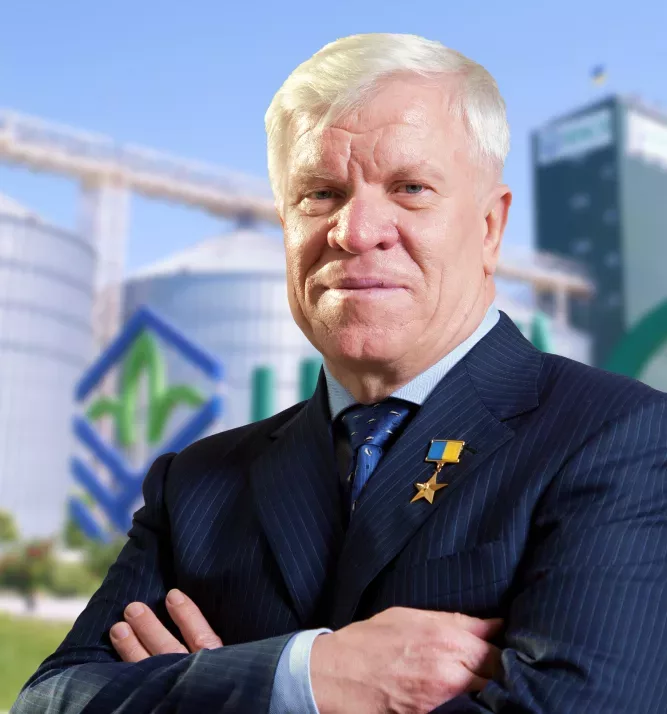

The founder of NIBULON, Oleksiy Opanasovych Vadaturskyy, was born in 1947 in Odesa region village of Bendzary, near Balta. Oleksiy Vadaturskyy began his career at the Trykraty Grain Processing Plant as chief power engineer, then worked as chief engineer of the Mykolaiv Regional Department of Milling Works.
At the age of 44, he celebrated the independence of Ukraine as deputy head of the Mykolaiv Regional Department of Milling Works. He had an appropriate and specialized education: he graduated from the Odesa National Academy of Food Technologies, which was founded in 1902 as a school for millers. Everything there was about grain, flour, and mills.
In 1991, NIBULON was established as a joint Ukrainian-Hungarian-English venture (the name being an acronym for Nikolaev-Budapest-London) to produce and sell hybrid corn and sunflower seeds of Western selection, and only the general state of the market made Vadaturskyy deal with wheat and barley. His first acquisition in a “non-core” role was a compound feed mill. It turned out that the market was empty, and both cattle and people needed to be fed every day.
From 1992-1993, NIBULON took on an important task that involved supplying diesel fuel and gasoline to farms, which were purchased on the foreign market. Later, the company began purchasing western agricultural machinery for farmers. Obviously, it was at that time that the company’s mission and its founder’s life credo crystallized: a farmer should only think about increasing yields. A farmer’s job is to grow. Everything else should be handled by a grain trader.
Accordingly, the company had to focus on elevators. We had to study the issue and learn how to build new ones. For certain reasons, Soviet elevators were not suitable as they were mostly located near railways, which were already clogged with ore and metal transportation, and were not designed to export grain, only to store it. So, by 2020, NIBULON already had 26 elevators. The fact that Mykolaiv is a seaport was very convenient. NIBULON built a grain terminal funded with European loans in the city, on the banks of the Southern Buh, and started exporting grain from Ukraine in August 2003. Symbolically, the first vessel to leave Mykolaiv was the Cyprus-flagged bulk carrier “D.S. Pioneer,” carrying feed barley to Saudi Arabia.
Then it turned out that Panamax vessels (the last size that can pass through the Panama Canal gates) could only load 60-70% of their capacity at the Mykolaiv berth, with a 9.5-meter depth, and the rest of the grain had to be loaded at Ochakiv. That’s when the company leased the first 4 lighters of 1000 tons each, a floating crane and a tug. Oleksiy Opanasovych placed his first order for 24 barges and 6 tugs with the Okean plant in Mykolaiv.
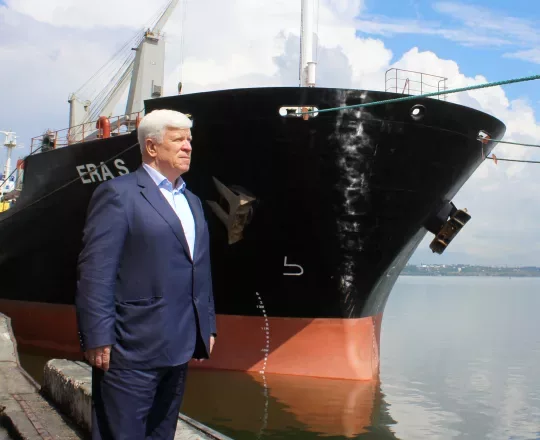
Oleksiy Opanasovych placed his first order for 24 barges and 6 tugs with the Okean plant in Mykolaiv. There was an opportunity to order abroad. Ukrrichflot, for example, was building a new series of ships at Romanian shipyards at that time without any concern for the matter, and so the leadership of NIBULON also traveled to Galati and Constanta to study the issue. However, they concluded that it was better to keep the money in Ukraine.
In 2013, Okean started having problems. It began going bankrupt. Two tugs from the batch ordered by Vadaturskyy were being completed under Oleksiy Opanasovych’s supervision. He also provided funding, because the accounts of the plant were blocked. For six months, he arrived each morning at the Okean shipyard for planning meetings, not at NIBULON. During these six months, Oleksiy Opanasovych studied the issue, met some good executives, and the executives took a closer look at his management style and solvency.
As soon as NIBULON bought out the Lyman shipyard, the company switched to a new production facility. Prior to that, NIBULON had only built elevators. It turned out that it could also build a fleet.
Back in 2009, the logistics of the company discovered that there was a real opportunity to transport up to 60 million tons of cargo per year along the Dnipro, which was the maximum capacity of the river known during Soviet times. And in 2021, NIBULON transported 4.15 million tons of various products along the Dnipro and the Southern Buh rivers.
The company had to build a whole network of new, mostly “riverine” elevators, choosing advantageous locations on the banks of rivers. The grain was transported to these elevators from the nearby neighborhood by road. After traveling up and down the Dnipro in search of suitable sites, Oleksiy Vadaturskyy decided to build the first transshipment terminal in the Cherkasy region near Chyhyryn, in the village of Vitove, on the Kremenchuk Reservoir. The terminal was built in 2009. The last one is Zelenodolska branch, which appeared in 2020 in Dnipropetrovsk region. In total, 10 river elevators were emplaced on the Dnipro, including 3 on the Southern Buh. At the mouth of the Dnipro, in Hola Prystan, a terminal was built to allow ships to enter to provide vehicle relief to the Kherson port and Antonivskyi Bridge.
In 2010, NIBULON transported 100 thousand tons of grain by water to Mykolaiv. In 2011 – 600 thousand tons. In 2021 – more than 4 million tons. When the Southern Buh joined the Dnipro with a terminal in Voznesensk, the Mykolaiv grain hub began to handle more than the Odesa one. In order to overtake Odesa, where the depths are 14 meters and Panamaxes are loaded completely right under the berth, Oleksiy Vadaturskyy studied the issue again and ordered a St.Mykolai transshipment crane from Constanta, which turned out to be the largest in the Black and Mediterranean Seas. When it was placed on board the Panamax on the so-called “Banka Trutaieva,” it handled four 4,000-tons lighterers at once under both sides of the bulk carrier. And when the barges were being changed and canting, it continued to load grain from its own 1,000-ton hold so that there was not a single minute of downtime.
But such intensive use of river routes has also revealed numerous shortcomings and obstacles. After a decade of downtime, the Dnipro has become shallow. Of the 1,770 kilometers of Ukrainian waterways, 990 kilometers were silted up. However, instead of giving up, Oleksiy Opanasovych decided to raise the stakes again: NIBULON itself started dredging critical areas. They again went on tour, studying the market for dredging equipment, and bought a machine. They covered 102 km from Mykolaiv to Buzkyi Gard. We also began to clean the Dnipro and ran into rapids as well. To overcome them, NIBULON shipbuilders built a unique self-propelled dredging vessel of the SDS-15 project with the symbolic name Mykolaivets, which can work at depths of up to 15 m with a bucket, a milling cutter, and a hydraulic hammer.
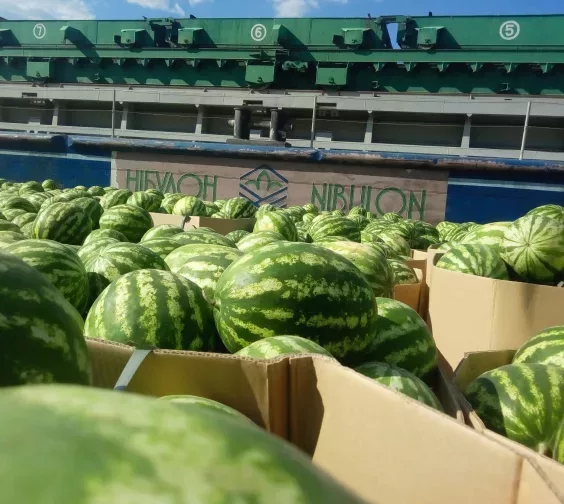
The river routes cleared by NIBULON made it possible for many companies with 1-2 tugs and 3-4 lighters to engage in grain shipping. The Dnipro was rejuvenated. This was after the increase in exports through seaports and the “elevator boom” in 2017-2018. The capacity of Ukrainian grain storage facilities increased from 20-25 million tons to about 50 million tons. Yields also increased. If in the 2000s we started with 3 million tons of corn, we increased our harvest to 25-27 million tons on the same area — 9 times! This is what happens if, as Vadaturskyy planned, you free the farmer from everything but growing crops.
With the revival of river navigation, the question of “reverse loading” the fleet arose: transporting something by barge to the north. The culmination of this was the famous “watermelon barge” from Hola Prystan to Kyiv (actually Pereiaslav), an annual attraction for Ukrainians who would go to the gates and take pictures of the “train” passing with its watermelons through Zaporizhzhia, Dnipro, or Kaniv.
NIBULON suffered greatly at the onset of Russia’s full-scale invasion. Export flows had to be sent by road to four Danube ports, which increased the cost of delivery to the ship by 20 times (from $5-10 per ton to $100-150). The famous fleet was blocked in the port of Mykolaiv. River navigation was not working. However, Oleksiy Opanasovych did not give up even at that moment. The company responded adeptly to this challenge by building a grain terminal in Izmail within a few months. As a result, the port of Izmail set a historical for cargo transshipment record, more than the entire period of its existence combined (and it has been known to exist since the ninth century as part of the Kievan Rus Empire). With a capacity of 300,000 tons per month, the terminal facilitated the export of an additional 2 million tons of grain per year while Black Sea ports have been blocked during the war.
Oleksiy Opanasovych stayed in Mykolaiv during the most difficult days of the Russian assault, and he is said to have raised the morale of Mykolaiv residents by that very fact. Since Vadaturskyy did not leave, the city would not capitulate. Then the daily rocket attacks began, and Oleksiy Opanasovych and his wife Raisa Mykhailivna stayed in the city. On the night of July 31, 2022, a Russian missile directly hit the Vadaturskyys’ house in downtown Mykolaiv. Both were killed. Eternal memory.
The information from Anton Sanchenko’s book “The Chronicles of the Dug Sea” was used to create this section.
Awarded the Certificate of Honor of the Cabinet of Ministers of Ukraine for significant personal contribution to improving the efficiency of the agricultural sector of the economy;
Awarded the title of “Hero of Ukraine” and the Order of the State for his significant personal contribution to strengthening the potential of the agro-industrial complex, organizing and ensuring the achievement of consistently high performance in agricultural production, and developing the social sphere;
Awarded the State Prize of Ukraine in Architecture for the architecture of the transshipment terminal of NIBULON Ltd. in Mykolaiv;
Nominated for the World Food Prize;
Awarded the title of “Honorary Citizen” and an award for significant personal contribution to the development of Mykolaiv.
Believe in yourself and don’t be afraid of anything, because everyone has equal opportunities to achieve their goals
I have always believed that there is nothing impossible. And NIBULON has proved it many times over. We have driven and are continuing to drive Ukraine’s economy upward, overcoming all obstacles along the way, and we are developing crucial industries on our own and giving impetus to other areas: shipping, shipbuilding, logistics, metallurgy, construction, and more.
A new challenge is a new chance. When you face challenges, you will have character, confidence, and success.
To build a successful business, you need to work on yourself. Talent alone will not cut it.
To succeed in any field, hard and perhaps somewhat monotonous work is important. Every day, from morning to night. And you shouldn’t be afraid of any job, even the menial ones. Because success belongs to those who can do everything, who have gone through everything, who are not afraid of challenges.
I consider myself to be a simple person who grew up in a village, who did something only because of my desire. And I am very pleased that our company is well known around the world. But in general, Ukraine is still very weak. Don’t we have talented people? Yes, we do, and a lot of them. But the conditions aren’t right for them. Not everyone is ready to shoulder the burden of a constant war with the state and build a business on their own. The easy way out is to go abroad and work somewhere else. Then hope that someone in Ukraine will create the necessary conditions during this time.
Be able to find the positive in everything and turn it into success. No matter how difficult it is for me and the entire team, the important thing is to be able to find a positive moment and present it in such a way that this pleasure, however dainty, is more important than failure.
Be able to find the positive in everything and turn it into success. No matter how difficult it is for me and the entire team, the important thing is to be able to find a positive moment and present it in such a way that this pleasure, however dainty, is more important than failure.
I can take it, because I am a Ukrainian.
«If Ukraine had 10 people like Oleksiy Vadaturskyy, it would flourish. I know this for sure. I could feel the warmth of his visionary flame, saturated with the dignity of a freedom-loving person paving the future. The bigger the tasks and the more brazen the attempts to extinguish it, the stronger this flame grew. From the dream of a thirteen-year-old boy who first started working at the threshing floor. From the ambitions of a young specialist who traveled the world to meet challenges. With the perseverance of the conqueror of the desert of Mongolia, where he built modern enterprises, the decision to revive Ukraine as a breadbasket of the world was born, sprouted, made its way and matured. The brave have happiness, and the hardworking have destiny. Add to this the courage to never give up, and you get the genetic code of a Ukrainian hero who managed to build a powerful enterprise at the intersection of several industries: agricultural production, international trade, shipping, and shipbuilding. The glorious indomitability of Oleksiy Vadaturskyy will always be an example and inspiration for NIBULON’s employees and partners.»

Andriy Vadaturskyy,
Son, NIBULON’s CEO
«Without Oleksiy Opanasovych, the Dnipro was orphaned, Ukraine was orphaned. If we adequately and properly evaluate his work, what he did, how he looked at the prospects, if we are conscious of this, it can become a vivid example for many people of how to organize today and tomorrow. The fact that the country went from 24 million tons of grain in 1999 to a record 106 million in 2021 is significant. Another such economy certainly does not exist, not only in Europe, but the whole world. In such a short time, Ukraine has become one of the five largest exporters, and the first in the world in a number of positions.»

Viktor Yushchenko
Politician and statesman, third President of Ukraine (2005-2010)
«The unique grain company has enabled the development of not only the industry, but also shipbuilding and ship repair plants in Mykolaiv… The war did not stop Oleksiy Vadaturskyy. During this extremely difficult time, he launched new large-scale investment projects, believed in and worked for the victory of Ukraine. The company, which cooperated with the whole world, remained in Ukrainian Mykolaiv»
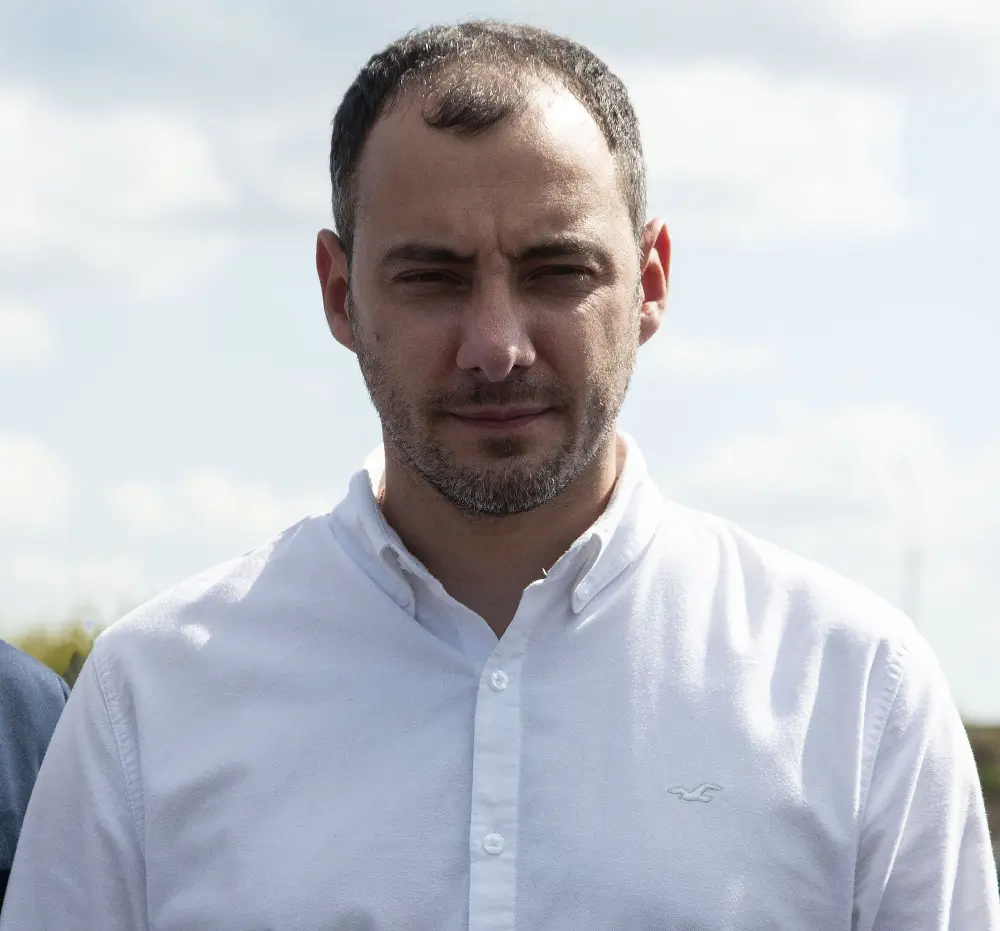
Oleksandr Kubrakov
Minister of Infrastructure
«Maybe someone thought that Vadaturskyy was from the cohort of “red” communist directors and would support the communist Leonid Kravchuk in the elections. This was not the case! Those first days, months, and years of the young state, he actively supported and campaigned for democratic transformations and sided with the democrat Viacheslav Chornovol. Oleksiy Opanasovych was the main and largest patron of the People’s Movement in Mykolaiv region. Today it is even difficult to list all the good deeds he financed, owing to the multitude of them. Perhaps it is easier to remember what wasn’t contributed to by his mind and active pro-Ukrainian democratic position.»
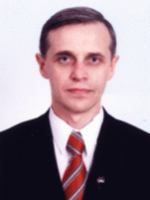
Yurii Didenko
Engineer, politician, PhD in History
«He never accepted that something could be neglected. He understood the chaos of the war, but managed to bring some order to it, which he was used to at NIBULON. This encouraged our team to face the war as if he had done. In my office, next to the icons given by grateful patients, I can see a portrait of Oleksiy Opanasovych from a distance. There are two icons there that were left by relatives of patients who had died as a way of saying thank you, they’d seen what we did for their relatives. My attitude to Vadaturskyy is precisely in this gesture.»
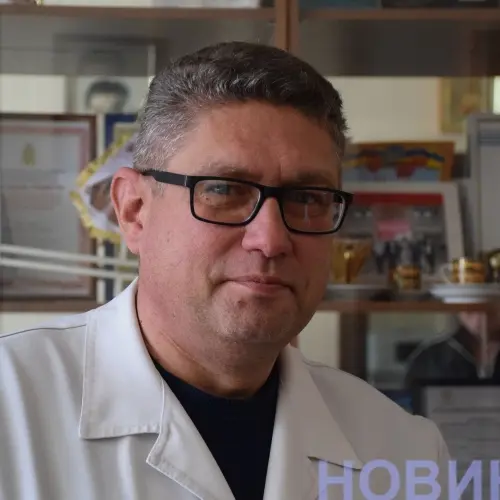
Oleksandr Demianov
Neurosurgeon, director of the CNE Mykolaiv city council
«There is no one to compare him to, but others will always be compared to him! When the Big Money program with the General Director of NIBULON was released, the video “Oleksiy Vadaturskyy. How to create a business against all odds. The rules of a billionaire’s life” gained fifteen hundred comments and one and a half million views in quite a short time! Ukraine was eager to know everything or almost everything about its hero. Even Oleksiy Opanasovych honestly admitted that he had not expected such popularity.».
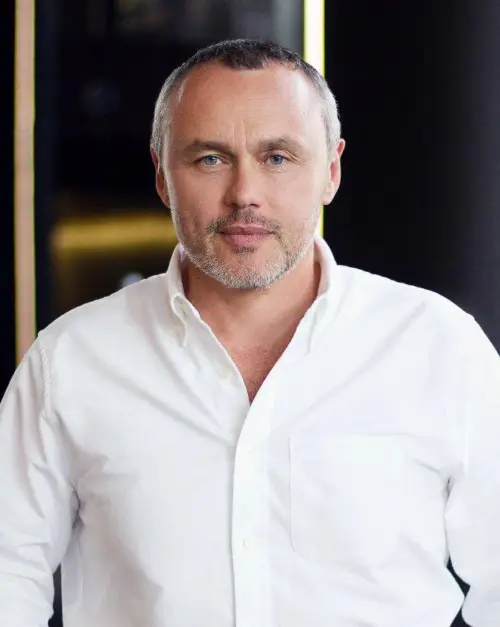
Yevhen Cherniak
Businessman, Chairman of the Supervisory Board of Global Spirits Holding
«All of Vadaturskyy’s adult life was a struggle for the truth, against the powerful entrenched bureaucracy that was still embedded by the Communists in the Central Committee of the Party, and the oligarchic corruption that has rapidly grown in modern Ukraine. The murder of Oleksiy and his wife Raisa was planned and targeted. He had too many enemies, and the most painful thing is that not only among our eternal sworn enemies, the Muscovites, but also among our own… It should not have happened this way!».

Vladyslav Shulha
Radio communications engineer, Major General of the Security Service of Ukraine
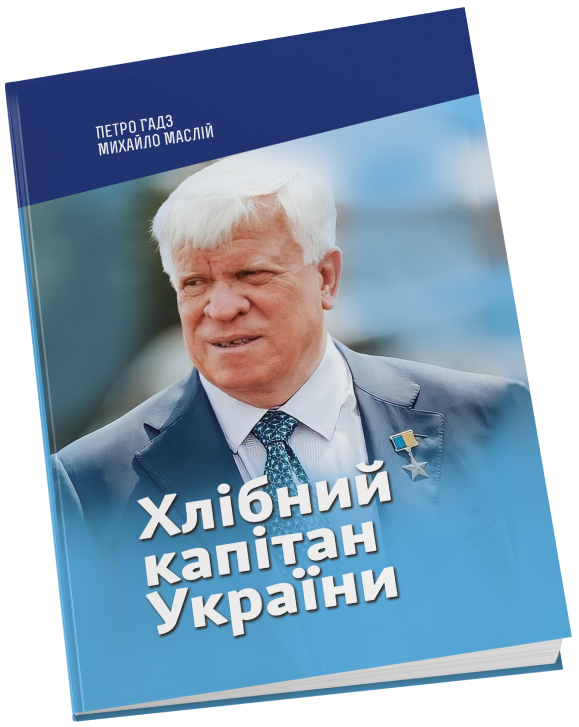
The authors created a unique portrait of Oleksiy Vadaturskyy, revealing his activities and achievements through the memories of his relatives, friends, colleagues and partners.
Before us is the path from a boy from the village to an activist with a global mindset, who believed in his country, in people who are capable of creating more, better and forever. We believe that everyone will find inspiration in the book to overcome any difficulties in life and achieve their own great goal. Let the incredible and irresistible “Don’t give up!” always ring out in our minds, giving us encouragement to believe, dream and act!
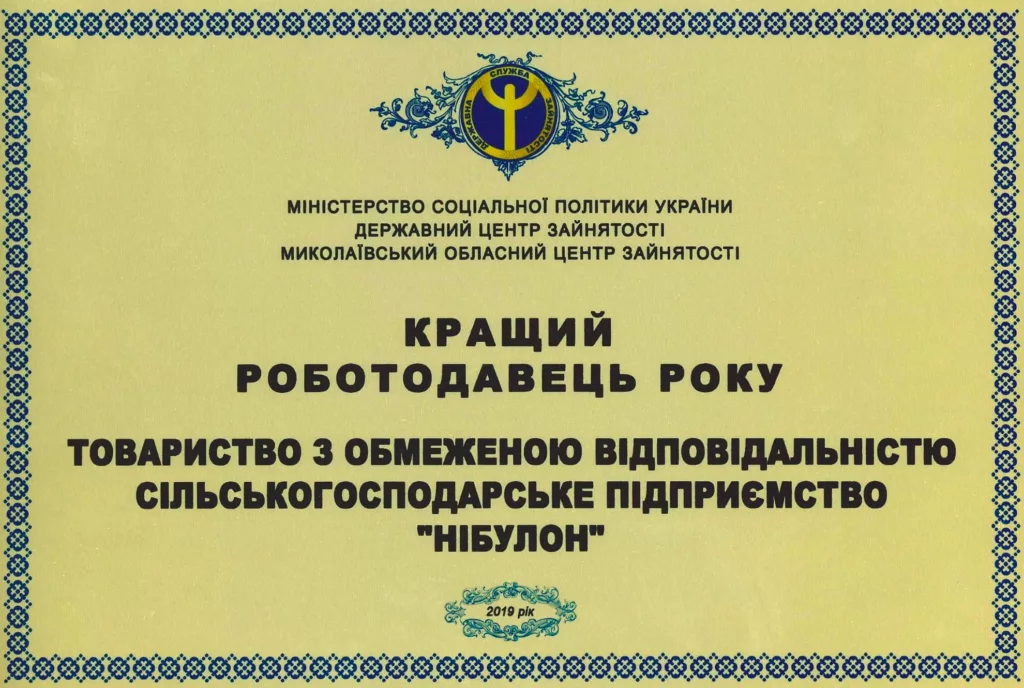
All-Ukrainian Public Organization “Taxpayers Association of Ukraine”
ISO 14001:2015
2017, 2019
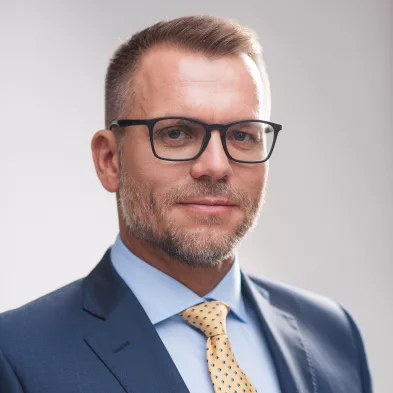
CEO
Андрій Вадатурський став генеральним директором «НІБУЛОНу» після понад 15 років роботи в компанії — в липні 2022 року.
Він прийняв цю посаду після трагічної загибелі свого батька та засновника «НІБУЛОНу» Олексія Вадатурського разом із матір’ю Раїсою Вадатурською під час російського ракетного удару по їхньому дому в Миколаєві.
З 2014 до 2019 рік був народним депутатом України від одномандатного округу в Миколаївській області та членом Комітету з питань аграрної політики. У 2017 році створив і очолив велику міжпартійну групу, яка виступала за розвиток українських річок як транспортного засобу.
Має ступінь магістра електротехніки Українського державного морського технічного університету та ступінь магістра економіки промисловості Лондонської школи економіки. У 2009 році за вагомий внесок у розвиток агропромислового комплексу України був нагороджений Президентом України, йому присвоєно звання «Заслужений працівник сільського господарства».
Одружений, має трьох дітей.